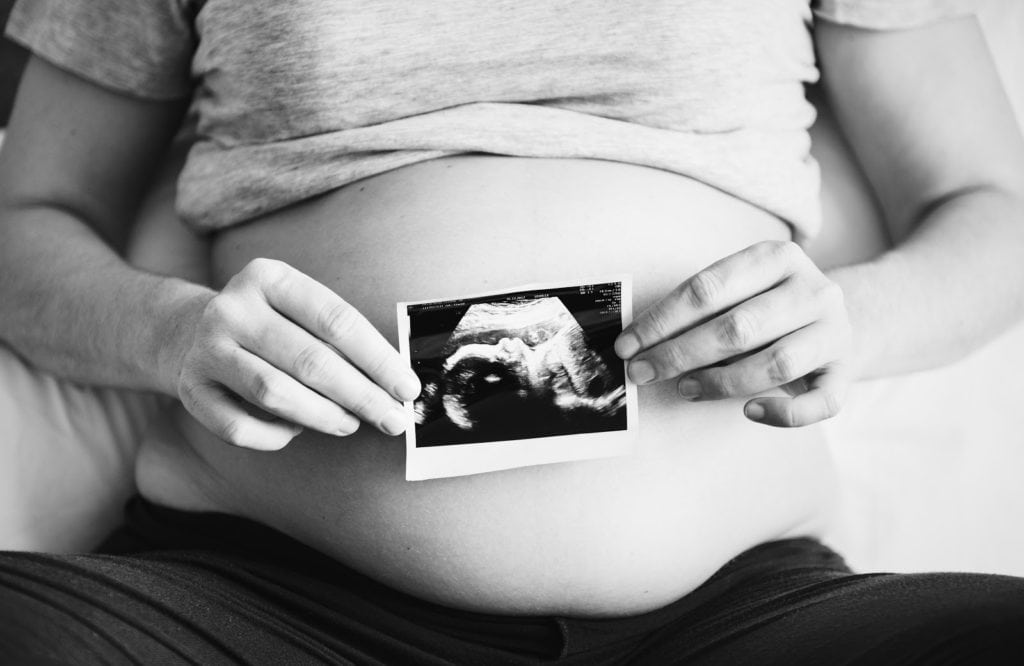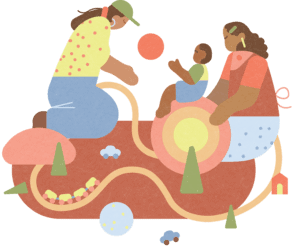From the moment you become pregnant, your body is on a hormonal rollercoaster. As a result, you can experience symptoms that you have never had to deal with before you in your life. Here’s what you can expect from your hormones in every trimester of pregnancy.

The First Trimester Hormones
Progesterone
A hormone that is a normal part of your menstrual cycle, your progesterone levels increase dramatically within your first trimester of pregnancy. The purpose of this boost is to prepare your uterine lining for the egg’s implantation. It also acts as a muscle relaxant to prevent your uterus from contracting until your baby is ready to be born. However, these same muscle relaxing pregnancy hormones can cause some other side effects such as constipation, as it slows down your digestive tract.
The hormonal changes during the first trimester often cause strong emotional fluctuations, heightened sensitivity, nausea and fatigue. PMS-associated irritability usually happens when there’s low progesterone and relatively higher estrogen in your system.
Estrogen
The second hormone that notably increases during pregnancy is estrogen. It maintains the endometrial lining that is essential for your baby’s development.
Estrogen is believed to promote blood flow, which is important for nourishing your baby, but it also has some annoying side effects. The increase in blood flow throughout your body may result in achy and tender breasts. It can also lead to the congestion that many women experience during their pregnancies, by generating swelling to the mucous membranes in your nasal passages. You might also experience a more urgent need to go to the bathroom as your kidneys are processing extra fluids and your uterus is putting pressure onto your bladder.
The plus side is that this increase in blood flow may be the reason behind your skin’s healthy pregnancy glow!
Human Chorionic Gonadotropin (hCG)
Human Chorionic Gonadotropin, or hCG, is most commonly known as the pregnancy hormone. It is generally only produced during pregnancy and can be found in the urine and the blood – which is why you can pee on a home pregnancy test and doctors can take a blood sample to tell whether or not you are pregnant. If you are carrying twins or multiples, there will be higher levels of hCG being created within your body.
There is no indisputable science behind what causes morning sickness, but hCG is thought to be a contributor. This pregnancy hormone can heighten your sense of smell, which can trigger nausea. However, it’s often a good sign when you’re feeling nauseous because that means your implantation and placenta development is going well! The newly developing placenta’s cells are what create the pregnancy hormone hCG within days of a fertilized egg’s implantation in the uterine lining.
hCG also suppresses your immune system in order to reduce the chance that your body will deny the fetus. This is what makes you more susceptible to illnesses during your pregnancy.
Within your first trimester, hCG will increase rapidly, doubling every 48 hours or so, before reaching its peak sometime between 7 and 12 weeks. Each woman will experience different hCG levels, and one of our naturopaths can organize hormone level monitoring in Newmarket and Toronto. After reaching its peak, your hCG levels should start to decline around the start of your second trimester.

The Second Trimester Hormones
Relaxin
In the second trimester, you might begin to notice that your muscles and joints have started to have a little discomfort, especially around your pelvis. This is the work of pregnancy hormones called relaxin. It is produced by the ovary and placenta in preparation for labour. Relaxin relaxes the ligaments in the pelvis while softening and widening the cervix. Sometimes, the discomfort and pain most women feel during the second trimester won’t dissipate until after giving birth.
Melanocyte-Stimulating Hormone
This group of pregnancy hormones is prompted by the continuing increase of estrogen and progesterone levels. Melanocyte cells produce melanin, which is the pigment that gives your skin, hair and eyes their colour. In pregnancy, this can appear in several different forms:
- Melasma (brown or greyish patches around the face)
- Linea nigra (dark line that goes up your belly)
- The darkening of your nipples
- More pronounced moles and freckles
If you have any of these pregnancy side effects, they will usually resolve itself postpartum. Another bonus of melanocyte-stimulating pregnancy hormones is that they might cause your hair to grow much more quickly because of the same surge of estrogen.
Cortisol
Cortisol is a stress hormone, but that doesn’t necessarily mean that it’s a bad thing. In fact, these pregnancy hormones are necessary for the development of the fetus since they regulate your metabolism and control blood sugar levels. Symptoms related to cortisol include stretch marks, potential issues with blood pressure and additional redness in the face.
Human Placental Lactogen (HPL)
The final type of pregnancy hormones we’ll discuss is human placental lactogen (HPL). It is one of the main hormones thought to be associated with insulin resistance during pregnancy, or gestational diabetes. It is a hormone that is secreted from the placenta and helps the baby grow, but too much HPL can actually lead to the overgrowth of the baby.
The Third Trimester Hormones
Estrogen
Your estrogen levels will be higher than ever in your third trimester (six times more than before pregnancy) and will peak around 32 weeks. Due to this, you might notice some swelling around your ankles and feet, as estrogen is indirectly involved in making a pregnancy hormone related to salt and water retention.
Progesterone
Similar to estrogen, your progesterone levels will peak around 32 weeks. This may cause some women to experience acid reflux or heartburn. These pregnancy hormones may relax the sphincter at the base of the esophagus, which consequently allows for food and stomach acids to travel back up, triggering the reaction.
Prolactin
In the third trimester, these pregnancy hormones will begin to stimulate the development of your breast tissue in order to get ready for lactation, starting with colostrum production. Your prolactin levels will be ten times higher by the end of your pregnancy than at the beginning.
Oxytocin
It’s unknown what is the exact triggering factor in labour, but many doctors believe it to be a complicated onrush of events that include a significant increase in oxytocin and a drop in progesterone. The combination of oxytocin and estrogen helps the release of prostaglandins, which soften the cervix in preparation for labour. Oxytocin also produces the contractions your body needs to eliminate the placenta after birth.
Knowing the pregnancy hormones behind your symptoms can help lead to managing them better. If you don’t know where to start, we’re always there to help through our naturopathic services. Contact us to book your appointment today.
What are some of the weirdest pregnancy symptoms you experienced? Let us know in the comments below!










